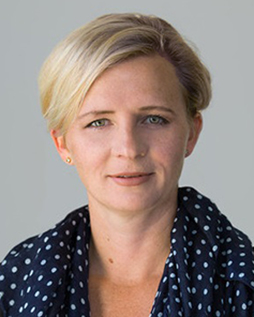
Kristy Hess an Associate Professor at Deakin University, Australia who research focuses on the role and place of local media in a digital era. She also examines the geographies of journalism in terms of media’s relationship to boundary maintenance, place-making and power. She has won a national award for her role in bridging the teaching/research nexus in journalism theory and practice and is the academic director of the largest industry/university partnership in Australia to educate working journalists in rural and regional areas. Kristy also serves as associate editor of Digital Journalism.
DJRG Fellow, September 20190
Title and abstract
This presentation argues for the study of place, space and territory as a necessary trichotomy in studies of journalism in the digital age. Spaces become places when bestowed with meaning or significance by those whom engage with them – that much we have learned from interdisciplinary studies from cultural geography to urban development, media studies, philosophy and sociology.
Our sense of place, meanwhile, is often strongly associated and linked to physical surroundings, to people, even objects, artifacts and digital sites – it is a deep feeling of comfort, ease and familiarity or a connection we can’t always explain. When such feelings and actions become deeply internalized, there is significant advantage to those whom are considered custodians of or hold influence over such places – in fact particular individuals and institutions, including news media, are expected to perform this role.
To dominate or hold power in place means we must examine space, place and territory as a necessary trichotomy. It is surprising this has not been as clearly positioned before in the literature on digital journalism, especially given that media territories are being carved out in online spaces at a rapid pace. There are constant symbolic battle lines being drawn by news outlets over their perceived legitimacy to serve, define, patrol, defend or protect their own interests and ultimately those of a given space/place or what we have previously termed as news zones.
The connection between media and territory has a rich scholarly underpinning, especially when it comes to exploring the news media’s symbolic power to construct reality and our perception of geographic territory, from ideas of nationalism to our ‘sense of community’ that plays out across macro and micro levels of society. It is well documented that news media too can be used as a tool of influence within the political field to relay propaganda in order to reinforce or assert territorial boundaries. At times there can even be tensions between the state and news media in patrolling and defining cultural boundaries within and across geographic territories, especially during moments of crisis such as terrorism or political events like Brexit.
In this presentation, I will argue, that news media territories emerge when there is a taken for granted assumption that certain media spaces and places are seen to represent collective ideas or values and enact rules, norms and ritualistic behavior, ultimately leading to a binary between insiders and outsiders. For media territories to exist, however, people must believe – albeit subconsciously – that certain media agents have the power to indeed lay claim to such places and spaces.
Consequently, we must not see territory as natural, but cultural – a social product linked to desire, power, and identity. A media power position is useful here because discussions of space and place raise questions about the organization of media territories themselves, the unevenness and the distances they involve and the moments when media power is contested. It will outline the interdependence between place and media territory, drawing on exemplars from local media and critically engaging with the uber territorial battle between news media and social media juggernaut Facebook over news territory.